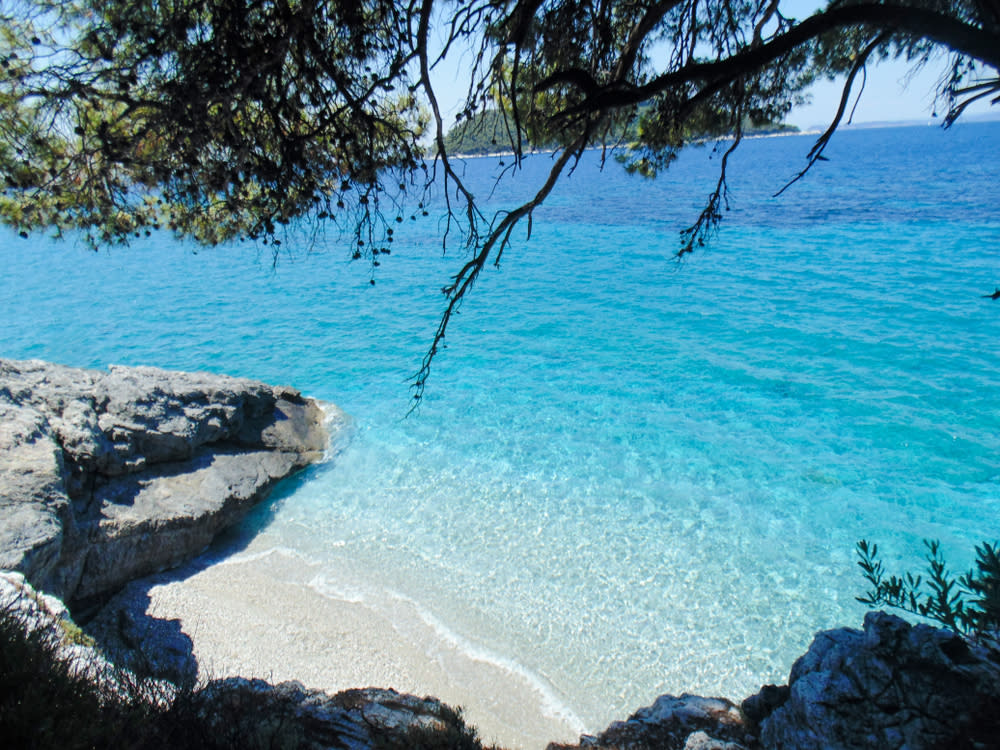More from Skopelos
Main Menu
- 00:00
- 06:00
- 12:00
- 18:00
- 23:00
Skopelos : Next 24-Hour Weather
Today - 10th April 2025
Sunrise 06:56
Sunset 19:58
Tomorrow - 11th April 2025
Sunrise 06:56
Sunset 19:58
Holiday Weather Now
Sorted by popularity:
Updated at 10:01 GMT
-
Temp feels like11°C52°F
-
Length of day13h 02m
-
Pressure30" (1018 hpa)
-
Visibility10 km (6miles)
-
Wind speed10 km/h
Sunrise 06:56
Sunset 19:58
-
Temp feels like:
11ºC (52 ºF)
-
Length of day:
13h 02m
-
Pressure:
30" (1018 hpa)
-
Visibility:
6 miles (10 km)
-
Wind speed:
10 km/h
Skopelos, a Greek Island in the Northern Sporades, is mountainous region with plenty of secluded beaches. Skopelos has a Mediterranean climate which is typified by hot summers with plentiful sunshine and low rainfall and cool, rainy winters. The Northern Sporades sit in the Aegean Sea to the northeast of mainland Greece. This region is wetter than southern Greece and as a result has a lush, green landscape year round. Southern areas are much more barren.
Summer, from June till September, is hot and dry. Daytime temperatures are pleasantly high, sitting in the mid 20s in June and September and reaching a peak of 28°C. The heat is usually tamed by cooling sea breezes and low humidity. However, it can rise into the low 30s in the height of the season so if youâre planning on any strenuous activity such as hiking or cycling, it is best to stick to the cooler months before July and after August. These peak months are perpetually in sunshine, receiving around twelve hours per day.
Autumn, in October and November, sees a dropping in temperatures and an increasing rainfall. October is still lovely with average highs in the low 20s till the middle of the month and pleasant water temperatures. Rain does increase but usually falls in short showers. However, later on in October the temperatures drop; the average high in November is 16ºC. While this is not cold and the sea remains warm enough for swimming, it is hardly typical beach weather.
Winter, from December till January, is cool and damp. The average high temperature drops 12ºC in December, 10ºC in January and 11ºC in February. The average low gets down to around 4ºC and it can get down to freezing. Snow sometimes falls all over the island and usually settles in higher areas. Rainfall gets to above 100 mm per month and it can often be overcast, leaving around four hours of sunshine per day. It can often be quite windy, making it feel colder and bringing sea transport to a halt. While this may sound unattractive it is still a great improvement on weather conditions found in the UK at this time of year; London sees an average high temperature of 7ºC and one hour of sunshine per day in December.
Spring, from March till May, is gradually warmer, drier and sunnier. March is still quite gloomy and cold with an average high of 13ºC and chilly, 5 ºC lows at night. April warms to an average high of 17 ºC and the sun comes out for eight hours per day, but nights remain mild. From the beginning of May summer-like weather can be enjoyed in the daytime with temperatures in the low 20s, ten hours of sunshine per day. The sea remains too cold for swimming till the beginning of summer.

















